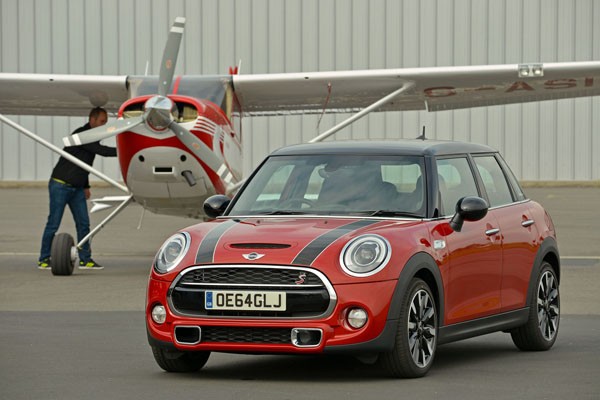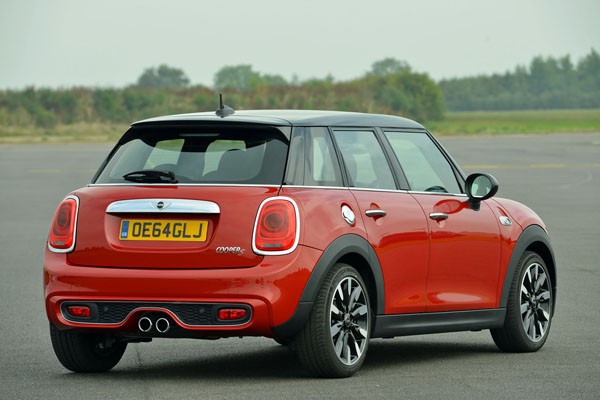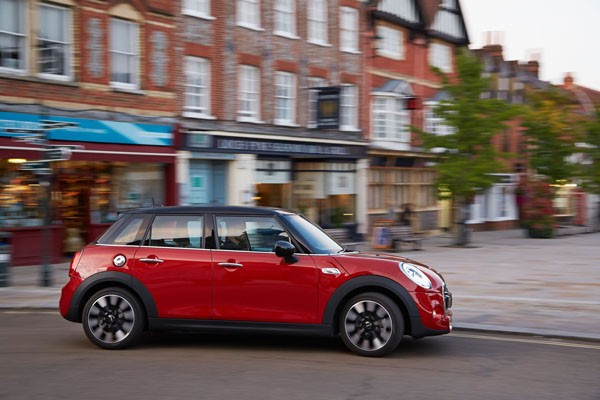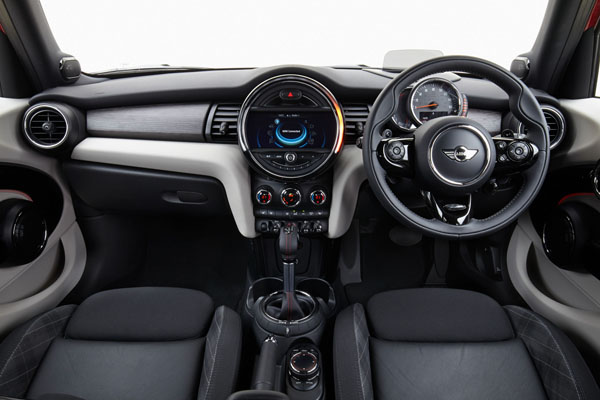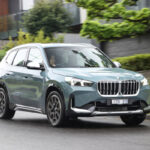They were iconic times. I celebrated starting uni by purchasing my first pair of Levi jeans; my first Ben Sherman button-down-collar shirt; and the up-and-coming Rolling Stones headlined an all-nighter at Wembley Pool
At the same time, Mini Coopers were buzzing around London leaving behind the titillating odour of cooking Castrol R. More than a whiff of nostalgia came back recently when Mini introduced its first five-door hatchback to complement the three-door variant of the third generation iconic car.
Known for more than half a century for its agile handling and intelligent use of space, Mini execs admit the company has come under pressure from potential Mini buyers who baulked at the idea of members of the family having to clamber into the back seats through the front doors.
Engineers and designers have come up with a car that maintains its fun-to-drive experience but adds more passenger and boot space, plus easier access through an extra two doors.
Longer by 161 mm and taller by 11 mm, the increased wheelbase (72 mm) serves up 72 mm more rear legroom, 15 mm more headroom and 61 mm more width at elbow level compared to the three-door Mini.
The boot offers 288 litres of luggage space, 67 litres more than the three-door, enough to take two airline cabin bags and a backpack full of video gear, as we found out on the media launch. Up to 941 litres of cargo can be accommodated with the 60:40 split rear seat backs folded down.
The new model comes in three variants – Cooper, Cooper D and Cooper S – powered by either a 1.5-litre TwinPower turbocharged petrol or turbo-diesel motor; or 2.0-litre TwinPower turbo in the Cooper S.
Standard across the range is a six-speed manual transmission, while on offer is an optional six-speed automatic for the Cooper and Cooper D, or Steptronic Sports Automatic in the top-dog Cooper S.
In typical Mini fashion, power delivery, plus ride and handling, are paramount, and are dealt up in spades by suspension tuning specific to each model and BMW Servotronic electro-mechanical power steering. (Mini is, of course, owned by BMW these days.)
The Mini five-door is packed with standard equipment, which includes keyless start/stop, rear parking alarm, Dynamic Stability Control, dynamic cruise control and six airbags. There are automatic windscreen wipers and lights,
Occupants are comfortably catered for with air-conditioning and power windows, while Bluetooth connectivity, audio with USB and Aux input keeps them entertained and in touch with the outside world.
The range-topping Mini Cooper S five-door adds Mini navigation, front sports seats, leather / cloth upholstery and dual-zone climate control air-con.
Despite increases in exterior dimensions all round, the Mini 5-door has maintained the profile of the three-door model. Up to the A-pillar, the five-door is the same as its sibling, the floating roof is retained; adding a D-pillar at the rear to take the extra inches.
The switched-on sixties look is still seen up front with trademark round headlights, while short overhangs front and rear and tapered rear window with roof mounted spoiler ensure handling is of the go-kart quality we have come to expect in a Mini.
The interior continues Mini’s tradition of ‘urban cool’ styling with circular instrument and control features dominating, the use of contemporary colours and materials and three-spoke leather wrapped, multi-function sports steering wheel.
The speedo has been repositioned from its traditional spot in the centre of the dash to a more convention position directly in front of the driver. That was done to free up the centre dashboard to display more information, including a range of interactive displays, depending on the model.
Head-up display, Park Assist and reversing camera are on the options menu.
Mini five-door does draw a long bow with its claim as a five-seater. Three in a row would be an uncomfortably tight fit for shoulder space, while rear legroom depends heavily on the positioning of the front seats.
As far as powerplants are concerned, the new Mini draws on the advanced powertrain technology of BMW, with the halo Cooper S featuring a 141 kW 2.0-litre four-cylinder turbo-petrol engine mated with a standard six-speed manual gearbox, spearing the car to a claimed 100 km/h in 6.9 seconds. This is cut by a further 0.1 second with the optional Steptronic Sports automatic transmission.
Various modern technologies are called on across the model range to minimise fuel consumption. These include engine stop-start, brake energy regeneration, weight savings and aerodynamic shaping.
The mid-range Mini Cooper D makes use of a 1.5-litre three-cylinder, common-rail, direct injection diesel engine putting out 85 kW of power and 270 Nm of torque. It’s said to have fuel consumption of 3.8 litres per 100 kilometres on the combined urban / highway cycle.
The entry-level Cooper calls on a similar three-cylinder petrol set-up with Valvetronic valve control and Double Vanos variable camshaft, plus TwinPower turbo helping to put out 100 kW and 220 Nm, with a combined fuel consumption of 4.9 litres per 100 kilometres.
Standard in the Cooper S and optional in the other two models is the Mini Driving Modes system which varies the driving characteristics in a choice of three modes – Mid, Sport or Green – by means of a rotary switch positioned somewhat awkwardly on the centre console behind the gear shift lever.
Reaching back the driver can engage Mid (also the default mode), which offers a middle-of-the-road driving experience balancing performance with fuel efficiency; Green increases the latter at the expense of performance, and also through intelligent control of such things as air-con and use of the coasting mode in auto cars.
Sport puts a spurt on through greater throttle, steering and auto transmission responsiveness. Take up of the optional Dynamic Damper Control has the car gaining added agility.
The five-door Cooper, Cooper D and Cooper S run on standard modern design light alloy wheels and tyres ranging from 15, 16 to 17 inches. Options include the classic 18-inch Cone Spoke. Active and passive safety features are designed to offer some of the best in modern motoring.
On the media launch drive in the Adelaide hills, the diesel showed itself to be smooth and responsive; the Cooper S forceful and uncompromising.
However, it was the three-cylinder petrol that turned out to be the surprise package by producing a driving experience far above its sub-$30,000 price tag.
The Mini Cooper five-door starts at $27,750, plus on-road costs, the Cooper D is $32,900 and the Cooper S $38,050. Interestingly, all models are $3900 under the previous generation three-door Mini Hatch thanks to the price cuts introduced at the time the gen-three was launched.
Those wishing to wallow in the company of a sixties British icon with the comfort and technology of a 21st century German BMW need look no further than the Mini five-door. It floors the opposition.




